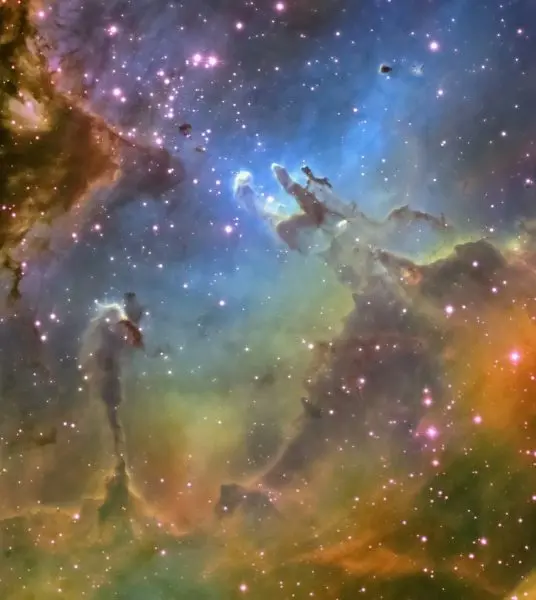
The Eagle Nebula, located in the constellation Serpens, has repeatedly served as a model for photography. The thing is, it contains an object of indescribable beauty – the so-called Pillars of Creation.
Now, thanks to the visualization from the National Aeronautics and Space Administration (NASA) NASA NASA allows everyone to take a close look at these mystical pillars and fly around them.
The first artistic images of the Pillars of Creation were taken in 1995 by the Hubble Space Telescope. The largest space telescope, the James Webb, which has been operating in orbit since 2021, also focused on the Eagle Nebula: it photographed it in 2022.
Astronomers NASA, in turn, decided to combine the creative works of both telescopes, creating a stunning 3D animation of a flight through the nebula.
The Pillars of Creation are primarily composed of cold molecular hydrogen and dust. They are eroded by strong winds and ultraviolet radiation from hot young stars scattered within the nebula. The pillars, resembling giant fingers, have distinct branches at their tops. Solar system .
The captivating 3D animation takes viewers on a journey through amazing structures. The short film is based on observations and scientific research conducted by a team of scientists led by Anna MacLeod, a lecturer at Durham University (UK).
Thanks to this video, viewers can see the fruits of the collaboration between the two most famous space telescopes. The Hubble captures objects that shine in visible light at extremely high temperatures, while the James Webb’s infrared camera, sensitive to cooler objects, penetrates through dust and reveals stars that are trapped within it.
By watching the video, one can get closer to the central pillar and observe a young protostar at its peak. In the infrared image, it emits bright red light, the publication reported. Science Alert .
Next to the top of the left pillar, a diagonal stream of material is ejected by a newborn star, which, however, cannot be seen. At the tip of this pillar, a new star shines brightly and is clearly visible.
